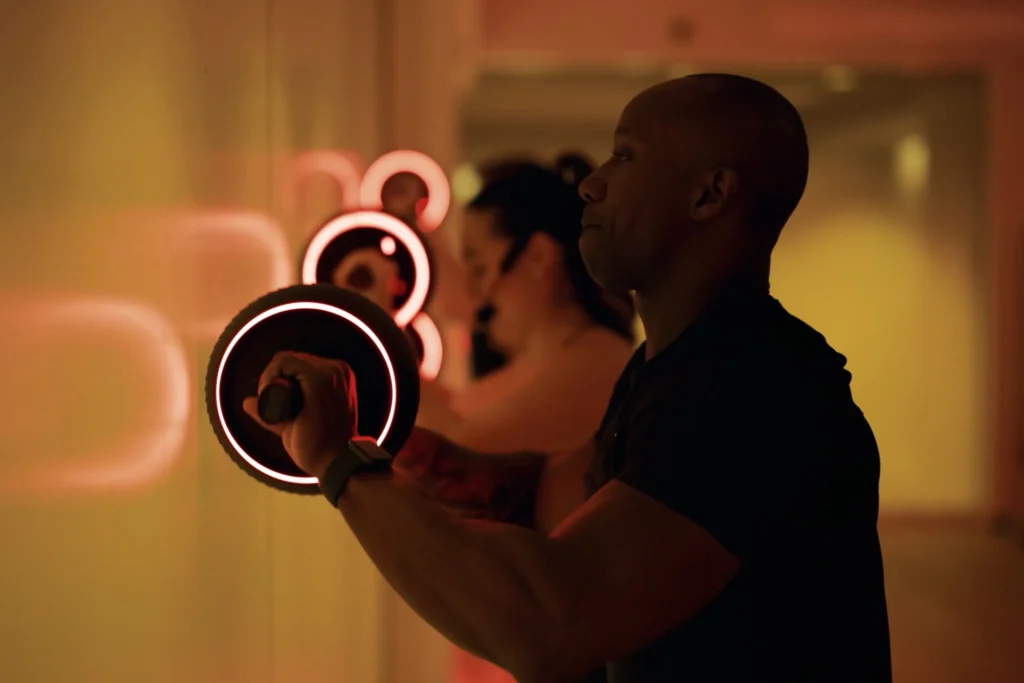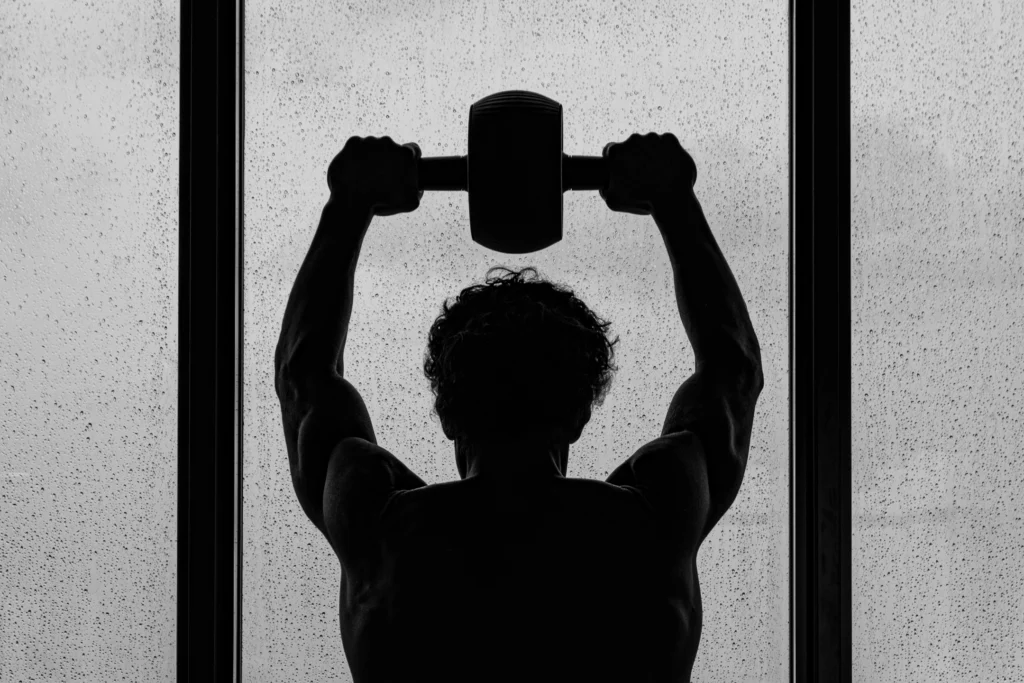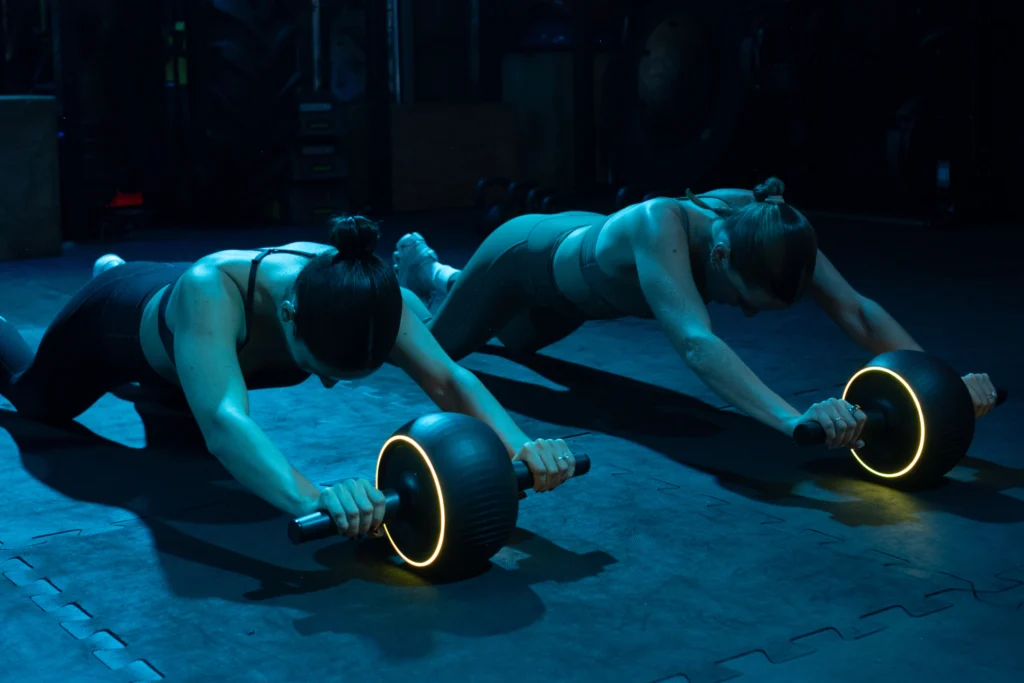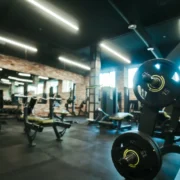ZeroWheel provides gyms and trainers with an effective, customizable tool for addressing consumers focused on healthspan at all fitness levels
When Neil Singer, PhD and his personal trainer Adam Cass met in 2000, they quickly agreed on one thing: the standard ab wheel wasn’t good enough.
Dr. Singer, with a nagging back injury at the time, couldn’t even use an ab wheel without collapsing. Cass, on the other hand, was able to pump the wheel with ease, but after a few reps, he always felt bored. The tool only offered the same repetition at the same intensity level, over and over again.
Despite coming from entirely different sides of the fitness spectrum, the pair found this common ground, and upon it, built ZeroWheel, a motorized training device that delivers real-time resistance and assistance to boost strength, balance, mobility and overall well-being.
“Neil couldn’t even use a standard wheel at first without falling on his face,” recalled David Ettenson, COO at ZeroWheel. “For Adam, who’s in stellar shape, it wasn’t challenging enough. So, Neil started thinking and said, ‘What if I put a motor in this thing?’”
Several years and upgrades later, the team is now focused on making core training more accessible, smarter and fun for other fitness consumers around the globe. In doing so, they’re also solving a deficiency that’s held back core training as a modality for decades.
Filling the Gap
Today, ZeroWheel is making effective core training available to all levels: from rehabilitation clients at boutique physical therapy clinics to top athletes across the NFL, NBA, MLB and PGA.
“ZeroWheel is the motorized experience that solves the accessibility gap,” Ettenson said. “It adapts in real time to users based on their distance, velocity and position. It knows when to engage different types of assistance or resistance. People over 300 pounds, people in their 80s, people recovering from postpartum or somebody who’s just never trained core can use it safely and effectively.”

ZeroWheel’s motor allows for wheel-based abdominal training at any fitness level.
“Over time, they can dial down the assistance as they get stronger, to the point where they hit zero assistance,” Ettenson added. “Then, they can progress into Quicksand — our primary resistance mode. It feels like you’re trudging through sand or mud, which can become incredibly challenging.”
“Zerowheel is a game changer for core training,” added Bill Beck, the former owner of Club Fit. “It’s really the first product I’ve seen that is as effective for beginners as it is for advanced athletes. My abs have been sore for a week. It’s a product that sells itself.”
Even for the most physically adept athletes, ZeroWheel remains a captivating piece of equipment with users that include members of the Portland Trail Blazers, Los Angeles Rams, Buffalo Bills, Miami Heat, Denver Nuggets and Miami Dolphins. Boston Red Sox closer Aroldis Chapman is also among its most committed users, as Ettenson noted that the pitcher nicknamed “The Cuban Missile” takes it with him on every road trip and trains with it daily.
Additional Accessibility
But as any consumer will tell you, your strength or fitness level sometimes feels like it can fluctuate by the day. One morning, you’ll feel like you can lift every weight in the gym. But the next? Just getting there is a struggle. ZeroWheel’s adjustable nature makes it applicable in each case.
“If it’s a day where you think you need to take things a little easier, we’ve got assistance modes,” said Danielle Page, Operations Manager at ZeroWheel. “If it’s a day that you really want to push it, we’ve got resistance.”

No matter how you wake up — or even where you wake up — the innovation is a suitable piece of hardware.
“People travel with it,” said Ettenson. “There are personal trainers who like to bring it on the road with them to clients. It’s an easy thing to bring instead of loading up their car with dumbbells or whatnot.”
More for Your Core
Ettenson said gym and fitness studio operators report standard ab wheels, crunch machines or other common core exercise machines often underperform. For one, they’re less accessible than the ZeroWheel, which undermines retention and engagement. Additionally, their size and price are detrimental, and for all of the space they take up, they’re not particularly beneficial.
“Traditional machines aren’t effective,” said Ettenson. “They triangulate individual abdominal muscles, but they don’t fully hit the stabilizers of your entire abdominals or around your trunk. They’re highly underutilized as people don’t seem to enjoy using them and they take up a lot of floor space. We’ve heard all of this from clubs.”
On the contrary, ZeroWheel is small, portable and targets the entire abdominal area.
“It doesn’t take up a lot of space,” said Ettenson. “It’s almost like a kettlebell and it offers a unique way for somebody to get started or push their limits when it comes to core training.”

The size makes it useful for fitness consumers who either prefer or have to work out in tight quarters or short bursts.
“I’ve got a 14-month-old daughter who’s running around the house,” Ettenson added. “I don’t have time to work out, but I could easily do 10 to 20 minutes of ZeroWheel from home…For somebody who lives in a studio apartment in New York City, it’s an easy piece of equipment to round out your home gym too that doesn’t take a lot of space.”
More For Trainers
ZeroWheel has also established a large fanbase among personal trainers. Its adaptability permits them to feature it with essentially any client.
“It’s customizable to anybody’s individual level and what they’re capable of doing,” Ettenson said. “It’s a great thing to throw into a session.”
It also connects to ZeroWheel’s mobile app, ZeroWheel Fitness, which tracks usage, delivers workouts and controls your device in real time.
“Trainers can control the wheel for their client as they’re using it and see their progress over time,” Ettenson said. “They could prescribe a workout for their client at home and make sure that they’re actually doing it.”
Rolling in the Right Direction
As the fitness industry shifts to concentrate more on lifespan, mobility and holistic health, studios and gyms that prioritize core exercise and functional movement are earning a second look. For ZeroWheel, that’s not just something the brand is capitalizing on — it’s a point of emphasis.
“You hear buzzwords all the time like ‘longevity’ and ‘active aging.’ People are no longer just training for aesthetics or even performance,” Ettenson said. “They’re training for functionality, for health span or just being able to carry groceries. That’s where ZeroWheel excels. It aligns. It hits that functional training piece.”

Rather than just strength, Ettenson added that ZeroWheel also assists with mobility and stretching, which both continue to draw consumer attention. He cited brands like Circular45, Midtown Athletic Clubs and specifically Club Fit as institutions already leveraging the device to sell memberships.
“They’re doing things in the space that are unique, adapting to what their members want — the current trends with functional training, accessibility and customization,” Ettenson said. “They’ve also adopted ZeroWheel into all sorts of classes like circuit training, open floor usage and one-on-one training. It’s helping to sell prospective members.”



